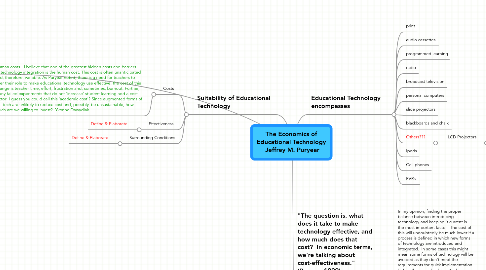
1. Ethics
2. Suitability of Educational Technology
2.1. Costs
2.1.1. Human costs - I believe that one of the greatest hidden costs and barriers to technology integration is the human cost. This cost is often unanticipated and, therefore, variable. As Puryear noted, there is a need for teachers to alter their role to make educational technology use effective, the cost of this change is teacher time, effort, frustration and, sometimes, burnout. Further, many failed experiments that do not 'increase' student learning add a cost factor: I guess you could call this 'academic cost'? Since augmented forms of ed. tech are unlikely to reduce cost and, possibly, be unsustainable, how much are we willing to invest? -Yvonne Dawydiak
2.2. Effectiveness
2.2.1. Define & Elaborate
2.3. Surrounding Conditions
2.3.1. Define & Elaborate
3. Educational Technology encompasses
3.1. print
3.2. audio cassettes
3.3. programmed learning
3.4. radio
3.5. broadcast television
3.6. personal computers
3.7. slide projectors
3.8. blackboards and chalk
3.9. Others???
3.9.1. LCD Projectors
3.9.1.1. smartboards
